Body Worlds Amsterdam: Museum or freak show?
Warning: If you’re squeamish, you might want to click away…but please share this post before you go!
Body Worlds: The Happiness Project exhibit in Amsterdam is described on its webpage like this:
“More than 200 anatomical specimens of real human bodies show the complexity, resilience and vulnerability of the body.”
In other words, at Body Worlds Amsterdam we are viewing actual dead bodies which have been put through a preservation process called “plastination.” These people, we are assured, voluntarily willed their bodies to be used in this way. They chose to have their bodies plastinated after their death with the understanding that they’d be put on display.

Viewing real human bodies
Visiting the Body Worlds Amsterdam exhibition is not like visiting any other museum. Even viewing a painting like Rembrandt’s The Anatomy Lesson of Dr. Nicolaes Tulp isn’t the same. Rembrandt may indeed have seen that cadaver being dissected, but all we as museum visitors see is a painting, a representation of that dissection.
In the Body World exhibition, dead human bodies are not referred to as “cadavers” or “corpses” or even “human bodies.” Instead, they are “plastinates.” The implication, then, is that they are no longer human, giving us permission to view them as objects for our own education and/or entertainment.
At the same time, the creators of these “objects” seem to make a contrary claim in the decisions they’ve made about what to reveal and what not to reveal. While none of the plastinates, even the full-body ones, are displayed with intact skin, the creators have nevertheless left the key signposts to their human-ness. They’ve left the skin intact around the eyebrows, eyes, and nostrils. The ears are whole, and the lips remain. This inevitably draws the viewer—me—to think of them as human.
Because they are human, and because they are naked—actually, they’re naked-er than naked, since I can see inside them—I felt embarrassed to look at them.
When I managed to tear my eyes away from the faces, I was able to inspect other parts of their bodies: the muscles, the joints, the digestive system or respiratory system, or whatever other part is being illustrated in each particular display.
They are indeed interesting and educational. Sometimes separate body parts are shown. For example, one case shows just hearts: a healthy heart, an enlarged heart, the blood vessels within the heart, and so on. Clear signs explain each item in English and Dutch.
Happiness as theme
The theme of the exhibition is “happiness,” and each floor or section of a floor focuses on a different contributing factor to happiness: diet, for example, and exercise and stress. Different parts of the exhibition focus on different human systems: the nervous system, the respiratory system, the digestive system, and so on.
Between the floors, on the stair landings, big signs contain the sorts of trite “life lesson” statements that make the rounds of Facebook: “Find time to lose yourself in what you love.” “Don’t compare your insides with other people’s outsides.” “When we are together everything’s better.” And so on.
Each section has at least one full-body plastinate as a centerpiece, and for some reason each of these is posed in an active position. One is ostensibly playing rugby, for example, though it was pointed out to me that the ball he is carrying is actually an American football. One plastinate stands, rather puzzlingly, at the helm of a ship. Two, meant to illustrate joints and the use of artificial joints, are doing gymnastics, as far as I could tell, with the man holding the woman on his knee. One woman, illustrating the reproductive system, is posed on a swing in a provocative position: arm extended up the swing’s rope, legs splayed.
A freak show
Despite my interest in the information that is displayed, my discomfort increased as I walked through the museum, and I struggled to define why. It occurred to me that I was behaving much like how we slow down to turn and stare at a car accident on the highway. Or how we tend to stare—or at least children do until they are taught not to—at people who are disfigured or missing limbs or in any other way outside the norm. Here, it is acceptable to stare.
I realized that Body Works Amsterdam (and presumably all of the other Body Works exhibitions around the world) is most akin to an old-fashioned freak show. We pay a high admission cost to stare at the freaks, but the fact is that the freaks reflect our own humanness. It’s a morbid self-titillation.
Sex at Body Worlds Amsterdam
That feeling seemed more than confirmed when I reached the ground floor, which addresses sex, presumably in terms of how it contributes to happiness. The walls are mostly blank, except for peepholes here and there. Rather than allowing visitors to peer into a graphic peepshow, however, each one reveals a text about the physiology of sex: the sorts of texts that on the upper floors appear on the wall or informational signs.
The shocking part, though, isn’t those texts. It’s the plastinates in the central display case of the room: two of them, having intercourse. The female figure is positioned and cut in such a way that the genitals of both can be viewed, yet the man looks positively tender in the way he holds the woman in his lap.
Get your tickets to Body Worlds Amsterdam here.
Looking at this display, I felt more shame than embarrassment, like I was some sort of Peeping Tom. I wondered: did these people agree to showing their bodies in such an intimate pose? Did those two people even know each other when they were alive? They agreed to donate their bodies, but would they agree to their bodies being displayed in this way? And who even thought of positioning them in that way? Who went ahead and created this display?
It all seems disrespectful. These people died. Presumably someone mourned their deaths. Yet here they are, set up for all to see, or at least all who have paid the admission price for this bit of titillation.
You might also enjoy these articles:
Plastinated bodies
Gunther von Hagens, the inventor of the process of plastination, is quoted as saying:
“The plastinated post-mortem body illuminates the soul by its very absence. Plastination transforms the body, an object of individual mourning, into an object of reverence, learning, enlightenment, and appreciation.“
If that is the intention, then the whole Body Worlds exhibit would be more acceptable if the plastinates were just shown sitting or standing, not in these various odd postures and certainly not in the act of having sex. The displays upstairs, or at least the straightforward ones that deal with a particular aspect of human anatomy or pathology, could certainly be called educational.
The full-body plastinates, however, are a freak show. They’ve been displayed in an intentionally unusual way in order not to educate but to entertain. And I doubt that most people who attend this exhibit go because they want to learn something; that’s just a perk. They go for entertainment.
That seems inappropriate, and a disturbing comment on our society.
What’s your view of the Body Worlds exhibitions? Have you visited one of them? Some of them display plastinates of animals rather than people. Would that change your view? Please add a comment below!
Use the map below to find accommodations in Amsterdam:
Visiting Body Worlds Amsterdam
Body Worlds Amsterdam: Damrak 66. This is less than 10 minutes’ walk from Amsterdam Central. If you need to take public transportation to reduce how much you walk, you can take a tram from the station and get off at Dam. With walking to the tram and from the tram, it’ll take about the same amount of time. Open daily 10:00-22:00. Buy tickets ahead of your trip so you can avoid waiting in line.
(Last edited August 22, 2024)
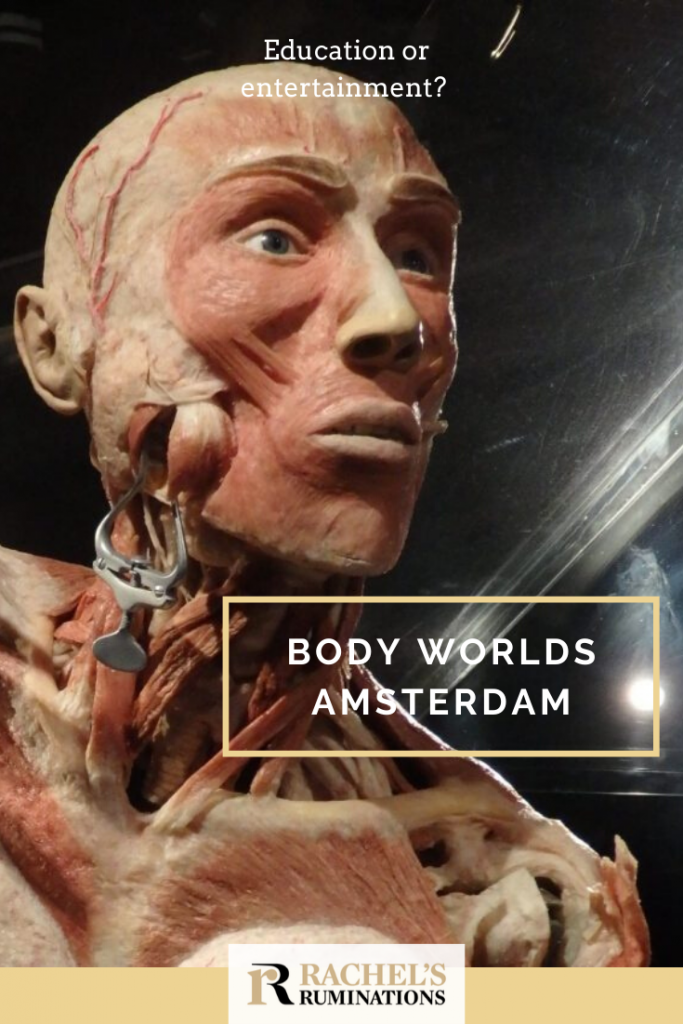
My travel recommendations
Planning travel
- Skyscanner is where I always start my flight searches.
- Booking.com is the company I use most for finding accommodations. If you prefer, Expedia offers more or less the same.
- Discover Cars offers an easy way to compare prices from all of the major car-rental companies in one place.
- Use Viator or GetYourGuide to find walking tours, day tours, airport pickups, city cards, tickets and whatever else you need at your destination.
- Bookmundi is great when you’re looking for a longer tour of a few days to a few weeks, private or with a group, pretty much anywhere in the world. Lots of different tour companies list their tours here, so you can comparison shop.
- GetTransfer is the place to book your airport-to-hotel transfers (and vice-versa). It’s so reassuring to have this all set up and paid for ahead of time, rather than having to make decisions after a long, tiring flight!
- Buy a GoCity Pass when you’re planning to do a lot of sightseeing on a city trip. It can save you a lot on admissions to museums and other attractions in big cities like New York and Amsterdam.
- Ferryhopper is a convenient way to book ferries ahead of time. They cover ferry bookings in 33 different countries at last count.
Other travel-related items
- It’s really awkward to have to rely on WIFI when you travel overseas. I’ve tried several e-sim cards, and GigSky’s e-sim was the one that was easiest to activate and use. You buy it through their app and activate it when you need it. Use the code RACHEL10 to get a 10% discount!
- Another option I just recently tried for the first time is a portable wifi modem by WifiCandy. It supports up to 8 devices and you just carry it along in your pocket or bag! If you’re traveling with a family or group, it might end up cheaper to use than an e-sim. Use the code RACHELSRUMINATIONS for a 10% discount.
- I’m a fan of SCOTTeVEST’s jackets and vests because when I wear one, I don’t have to carry a handbag. I feel like all my stuff is safer when I travel because it’s in inside pockets close to my body.
- I use ExpressVPN on my phone and laptop when I travel. It keeps me safe from hackers when I use public or hotel wifi.


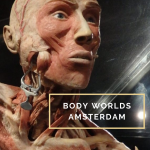
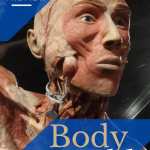
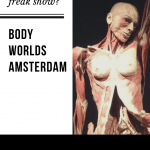
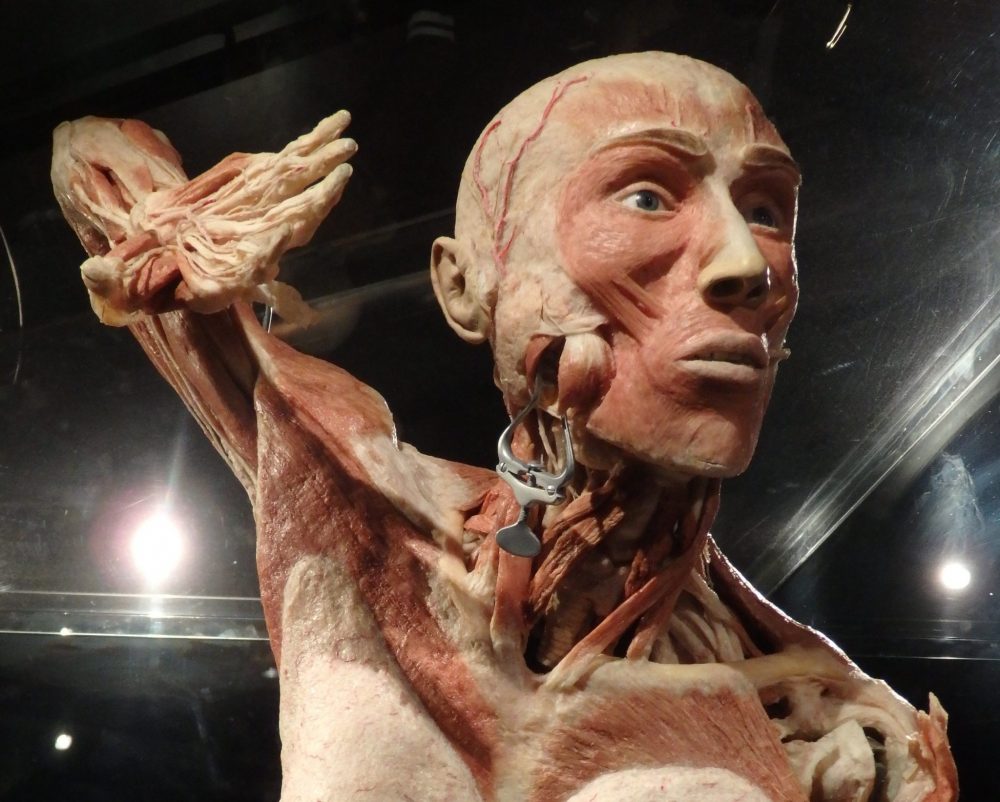
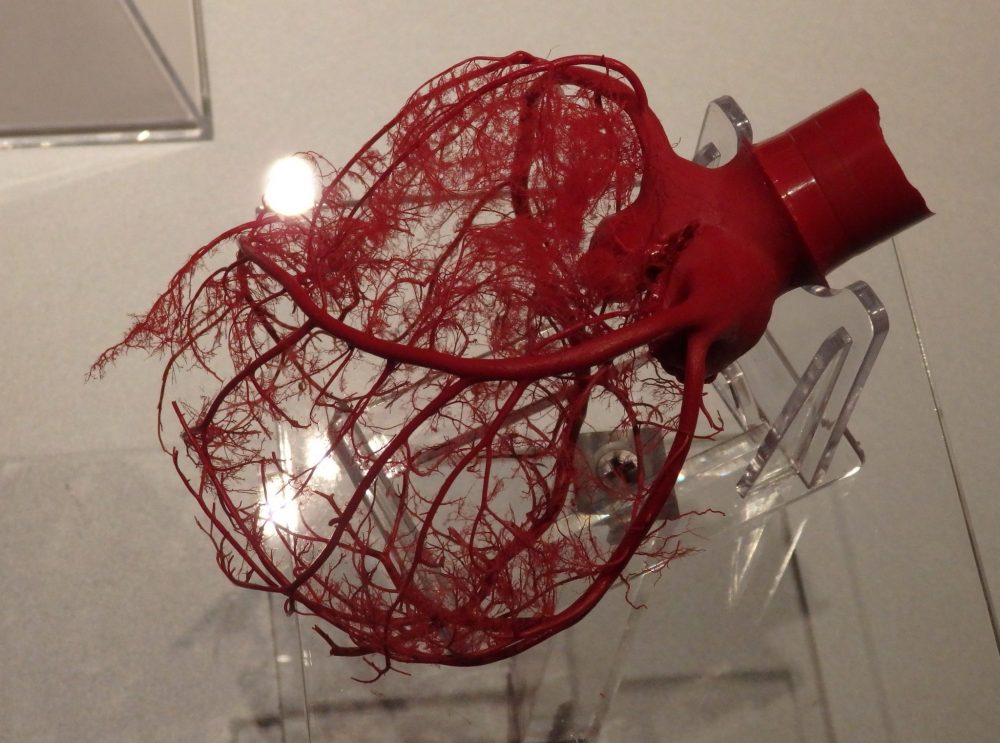
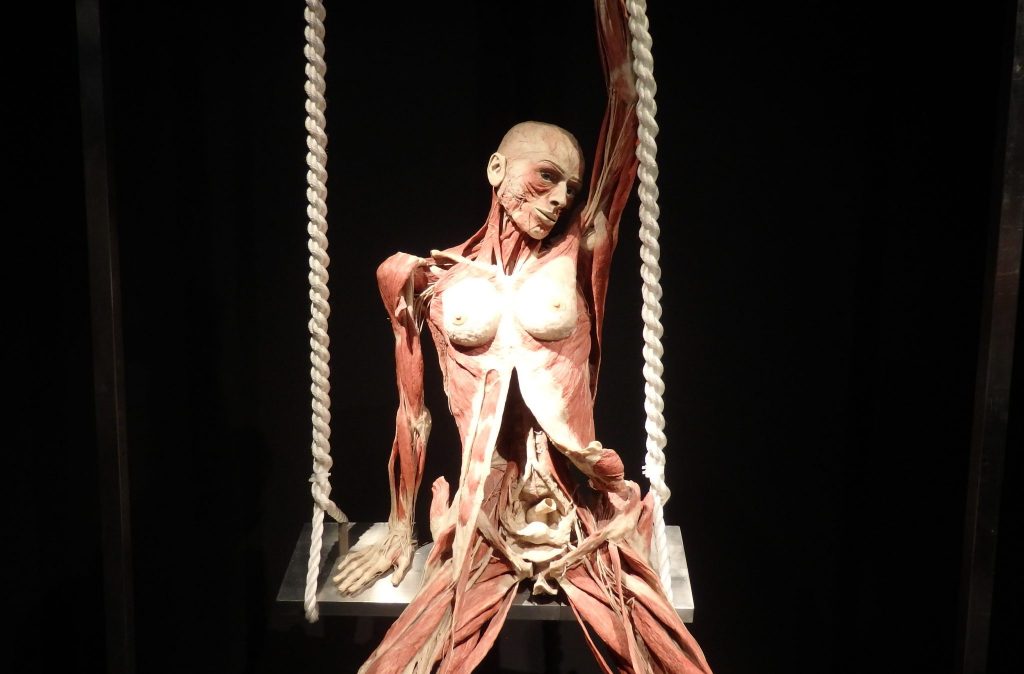
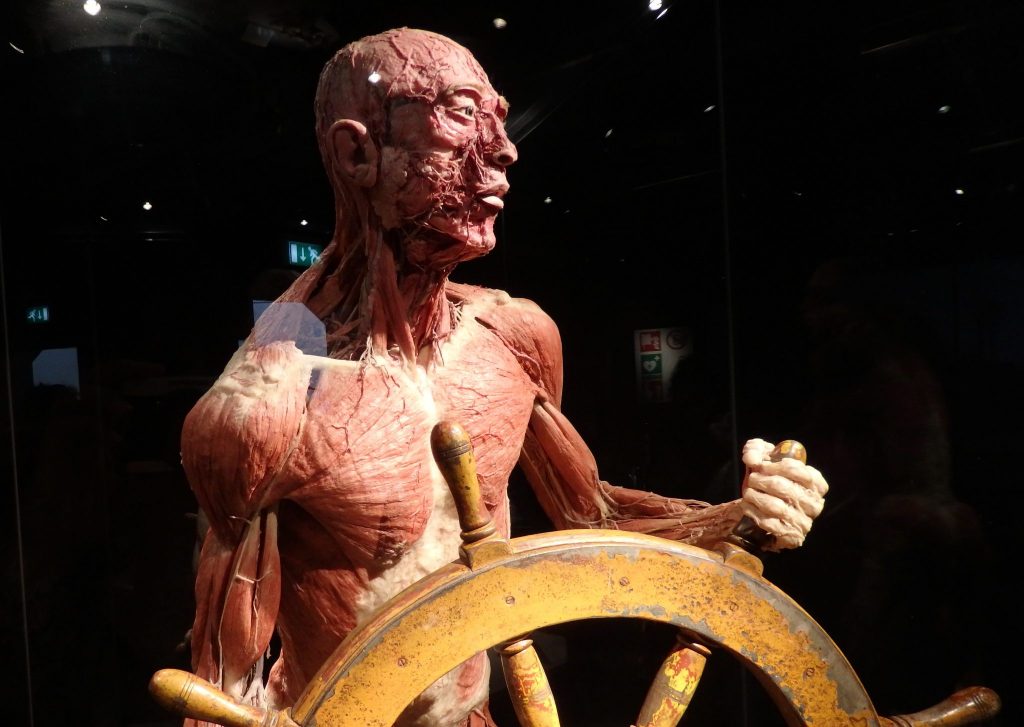

Wow! this has been going around for ages! I saw it in New York and London. which goes to show how popular and unique it is. Sort of like Brickworld the Nathan Sawalya exhibit I saw in NY and London but then popped up in Cape Town and Philadelphia when we were there. Did I think it was gross? yes, definitely. The body as a work of art which undoubtedly it is. I’m a bit squeamish so can’t say I enjoyed it. Trying too hard to create a stir very similar to the early Damien Hirst pieces.
Yes, perhaps that’s why they’re posed that way: to create a sensation. But that’s what seems so disrespectful!
I find it disrespectful. I also would like to know that the people agreed to have their bodies shown like this. What about their families? A freaking peep show for goodness sake. No, this is not good at all.
Yet lots of versions of Body Worlds are well-attended in lots of cities. And it’s educational as well. Where do we draw the line? Is the problem just the sex one or the whole thing?
Body Worlds sounds gruesome and sensationalistic and an exhibit I don’t want to see or support. It’s also disrespectful to the people whose bodies have been donated and I wonder as you do whether the donors agreed to allow anything at all to be done to their bodies. Much is done in the name of “education” and “research” that shouldn’t be.
I’m not as strongly against it as you are. It raised these questions, and I think it would be more respectful to display the plastinates in simpler positions: standing straight or lying on a table, unless there’s some educational reason to show them another way.
Rather like donating your body to be a cadaver for medical students to learn – donating your body for plastination for education I think is wonderful – What an amazing learning tool –
But as you say – did these people before they die get told that they were going to feature in a commercial exhibition and be positioned in seductive poses to entertain a paying public?
It’s the posing that is distasteful – Were the animals in more natural positions – or were they too having emotions imposed upon their beings?
Another Body Worlds exhibition has come to Leeuwarden, a city not far from here. This one features animals, and I think I’m going to visit it because I’m curious to compare them. I’m not particularly an animal rights activist, but it does raise questions. At least the humans volunteered. I want to see if I get a different feeling from the one using animals rather than humans.
I agree with you about its value for education. There was one woman visiting with me who was a doctor, and she said she wished she’d had something like this when she was in med school.
I saw the original Body Works exhibit here in Toronto, where it was exhibited at the Science Centre as an education display versus an ‘art exhibit’. I found it extremely interesting. The figures at that exhibit were displayed in athletic poses in some cases, which made you really appreciate the machine that is the human body. In others they were just ‘dissected’ in ways that were arresting and graphic but still powerful. (and not graphic in any sexual way) I have to wonder: if the venue were any other than Amsterdam which is known for its Red Light District, open sexuality etc, would the subject of sex have been on display at all? I think the exhibit plays the role of provocateur to different degrees depending on where it is. But I have to say, the part that I disliked the most were the ‘platitudes posters’ that you described accompanying the exhibit – leave those smarmy life affirmations for cheesy Facebook posts!
You may very well be right that they display them differently in different places, and were pushing the boundaries here in the Netherlands. I think it would seem much more appropriate in a science museum setting in less provocative positions. Did they have those “platitude posters” in the science museum too?
Body Worlds came to Minneapolis years ago before we left the mainland. We didn’t visit, but it was very controversial. Billed as educational and all sorts of things. I’m troubled by the concept, to be honest. And I think the sexual aspect is really pushing it. Gahh! I don’t feel like I’m a prude most of the time, but I’ll own it this time.
That’s a good way to phrase it: troubling. Yet sex is just as much a normal, physiological function as any other. If they’re addressing the theme of happiness, doesn’t it make sense to include sex?
We have almost gone to Body Worlds several times. Seeing it, I think it is cool and will stop in next time.
That’s first wholely positive response I’ve heard. Obviously lots of people feel the same or they wouldn’t be able to afford such a prime location in Amsterdam!
What an unusual exhibition. We visited the mummy museum in Guanajuato, Mexico, which seems to pale in comparison to this. No photos were allowed there.
Somehow mummies don’t bother me. Perhaps because they weren’t actually created to be exhibited. Or perhaps just because they’re older.
Thanks for the descriptive article Rachel.
I’ve always been a lover of science, understanding and learning and as such, I think the Body Worlds Exhibition is a wonderful concept.
I remember when it first came out and there was a viewing in London in the 90’s. We were fascinated and it was a bit of a media frenzy. I even went to see it myself! Dr Gunther von Hagens was called Dr. Gruesome or something, in those days!
I can understand why people get upset as the internal sighting of a human body might be (excuse the pun), too close to the bone but then again, isn’t that what science is about? I think the sexual poses have something to do with the location. It’s in Amsterdam after all!! However, the exhibitions in my mind, are educational and a scientific innovation for preservation, and how the human body looks like and in the end, how it works.
So you think the positions were sensationalized specifically because it was Amsterdam? Were the positions more straightforward in London? It wasn’t so much that they were dead bodies that bothered me, or the use of them for education, but the way it seemed to be intended to titillate and entertain, rather than educate.
I think so. I can’t remember the details any more! They were just in ordinary poses doing ordinary things. I think we were more in shock about their internal fibre rather than their poses and loads of children were there so I don’t think there was anything of a sexual nature.
But then again, the Science Museum in London had this huge model of where babies come from and ahem! how babies are made and everyone was alright with it!
Children are allowed in this one as well. I guess the poses didn’t strike you the way they did me (particularly the sex one and the woman on the swing). The fact that yours was in the Science Museum might also have affected your feelings about it. You expected it to be educational so it was. Or maybe they were just posed in simpler ways because it was for a Science Museum.
Probably!
I’d just say that on the Continent, topics are usually more open and that people should be prepared, and if they’re not up for the shock factor, it’s perfectly alright! 🙂
Your description of Body Worlds is excellent. I saw a show like this somewhere else, but I didn’t like it and would never go again. I do also wonder how the bodies were secured for this.
They state that they all chose to donate their bodies for this use. But I wonder about the details about how one’s particular body is displayed….
I saw a much less disturbing variation of this in Boston several years ago at the Science Center. It was more like the one someone mentioned seeing in Toronto. The people were doing athletic things, there was a ballet dancer, a camel, it was intriguing and amazing but not graphic or creepy. Of course this version would have been “banned in Boston” and for good reason!
From all these replies, it sounds like some parts of this exhibition might be unique to free-thinking Amsterdam. Which may mean that my response is partly due to my prudish American upbringing….
I saw Body Worlds when it first was shown at the Science Museum of Minnesota in St. Paul, and found it really fascinating. I liked that areas of the exhibit were divided by biological systems: muscles, nerves, digestion, etc. The affects of obesity and smoking were displayed, too, and raised a lot of awareness. The most controversial section at that time featured human fetuses displayed at all weeks of development. I understand that there is another company also producing these exhibits, though I don’t know anything about the quality. Having said all that, I wouldn’t pay to see the show again.
They had those sections at this one too. I was more comfortable with those and found them interesting and educational, e.g. seeing what a smoker’s lungs look like. There were human fetuses at this one too, but, surprisingly, and unlike the rest of the specimens, they were entirely white, which made them look like they might be plastic models. That made it easier to deal with them: they looked fake. Weird what our minds will do, isn’t it, to decide whether something is acceptable or not!
I’ve had the chance to visit Bodyworlds in a few cities that I’ve been in but never went because I’m too squeamish. I even had to avert my eyes while driving from the huge Bodyworlds billboards in Houston that loomed over the freeways. If I couldn’t even look at a sign, I figured the actual exhibit would do me in. From what my friends said, the ones in America focused more on the athletic poses. It’s very conservative here, so I imagine that the sexual or mildly provocative ones weren’t displayed. I completely agree with your take on it. I wonder what the families of the deceased thought when they finally saw what had been done.
A small comfort is that I’m sure that no one could recognize the people in this exhibit. I suppose under the skin we’re all the same. The little they left of eyebrows and ears, etc. wouldn’t be enough to identify anyone. You couldn’t, for example, tell if the person died young or old.
Hi Rachel, Interesting coincidence – Myra and I went to see the show in Portland the day after you posted this, although I didn’t read it until a day or two later. The Body Worlds exhibit is the premier show at the newly opened Portland Science Center.
As your other commenters have noted, the showing we saw had the ‘plastinates’ posed mostly in athletic situations – a soccer player, a gymnast on the rings, a swimmer diving. Along with specific organs and systems – a brain with the spinal chord and nerves, a digestive tract, healthy lungs vs smokers lungs.There were also displays where the body was just standing, but had portions ‘exploded’ to display more detail.
We went on a Saturday afternoon, and there were a lot of people at the exhibit. I was surprised by the number of children. There was also a cruise ship docked in town, although I’m not sure any of the passengers wanted to spend a couple hours in a museum.
We both found the show fascinating, and as we had dropped an extra $5 on the audio guide, spent quite a bit of time working our way through. At the very end, just as you reach the exit doors, there was a panel on the process of plastination along with a sample release form for someone who wants to donate their body. A number of previous commenters asked whether those donating knew how their remains would be used, and I think the answer must be yes, as the donation is specifically to the Body Worlds institute.
One thing I found about this show is that it stuck with me over the following days. I found myself thinking back and reflecting on it, unlike a recent visit to the Trolley Museum.
Thanks for another interesting post.
Charlie
I know they give permission, but does the form specify exactly how their bodies will be used? I was particularly wondering about the two posed having sex. Did they agree to how they’d be posed and with whom? I know you could say it doesn’t matter, since they’re dead, but it just seems so intimate!
You’re right about this staying with you; I doubt I’ll forget this one in a hurry!
We were all made through sex. Even when some of us were Made in a Petri dish, an ejaculation was needed at first. It’s as common as having breakfast. I think it’s very prude to judge that whilst visiting an exhibition about the human body in relation to happiness. One could skip the department/floor that’s dedicated to sex. If I would donate my body, which my soul would have left, I wouldn’t care. I would actually like to be in such a postition, rather then a boring one. But it wouldn’t be me anyway. I would be gone. It would be the structure of my cells, plasticised and coloured. For me it was very interesting to see the bodies because I’m studying to become a massage therapist and it’s very helpful to actually see how and where the muscles, tissue and bones are located in the body. A drawing can’t show this so well and visiting an anatomical laboratory each time costs much more bodies, work, time, and money.
Yes, I suppose my initial response was prudish, but I did stay to see it all! I just wish I had more information about these people (okay, former people) and whether they agreed to this before they died. I mean, maybe they wouldn’t care, like you, but what if they were prudish too?
Why are all of the women’s breasts and nipples displayed when none of the men’s nipples are left intact on the muscular system plastinates? Has anyone else found this problematic?
Yep. Breasts on women are seen as part of their very identity, but not part of men’s identity. So they could remove them on men to show the muscles underneath and still have us see them as men, while presumably, under the mammary glands, etc. the women’s musculature is very similar. The implication is that women after mastectomies or even just women with small breasts are somehow not fully women. There was plenty that was problematic in this exhibit to me!